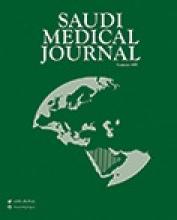Abstract
OBJECTIVE: To evaluate the association of growth hormone (GH), and insulin-like growth factor-1(IGF-1) in the production of male sex hormones and the severity of acne in Iraqi male patients, and to assess their role in development of secondary hyperlipidemia in such patients.
METHODS: We conducted this case-control study and single-center measurement of hormones and selected biochemical parameters in a cohort of volunteer males in the Department of Biochemistry College of Medicine, Baghdad University, and in the Dermatology Department, Baghdad Teaching Hospital, Iraq, from January 2010 to November 2010.
RESULTS: The mean serum levels of GH and IGF-1 of severe acne patients were significantly increased when compared with mild-, moderate acne patients, and healthy controls (p=0.0001). Also, the mean serum total testosterone, androstenedione, and dehydroepiandrosterone sulfate (DHEAS) levels were significantly increased in severe acne compared with those of mild- (p=0.0001), moderate acne patients (p=0.005), and healthy males (p=0.0001). The mean values of lipid parameters significantly differed in severe acne patients in comparison with other acne groups and controls (p=0.004). The results also revealed a significant correlation between the studied parameters.
CONCLUSION: The study showed a significant elevation of serum GH and IGF-1, which enhanced androgen hormone production and the development of severe acne. These patients may develop hyperlipidemia secondary to their hyperandrogenism.
- Copyright: © Saudi Medical Journal
This is an open-access article distributed under the terms of the Creative Commons Attribution-Noncommercial License (CC BY-NC), which permits unrestricted use, distribution, and reproduction in any medium, provided the original work is properly cited.






